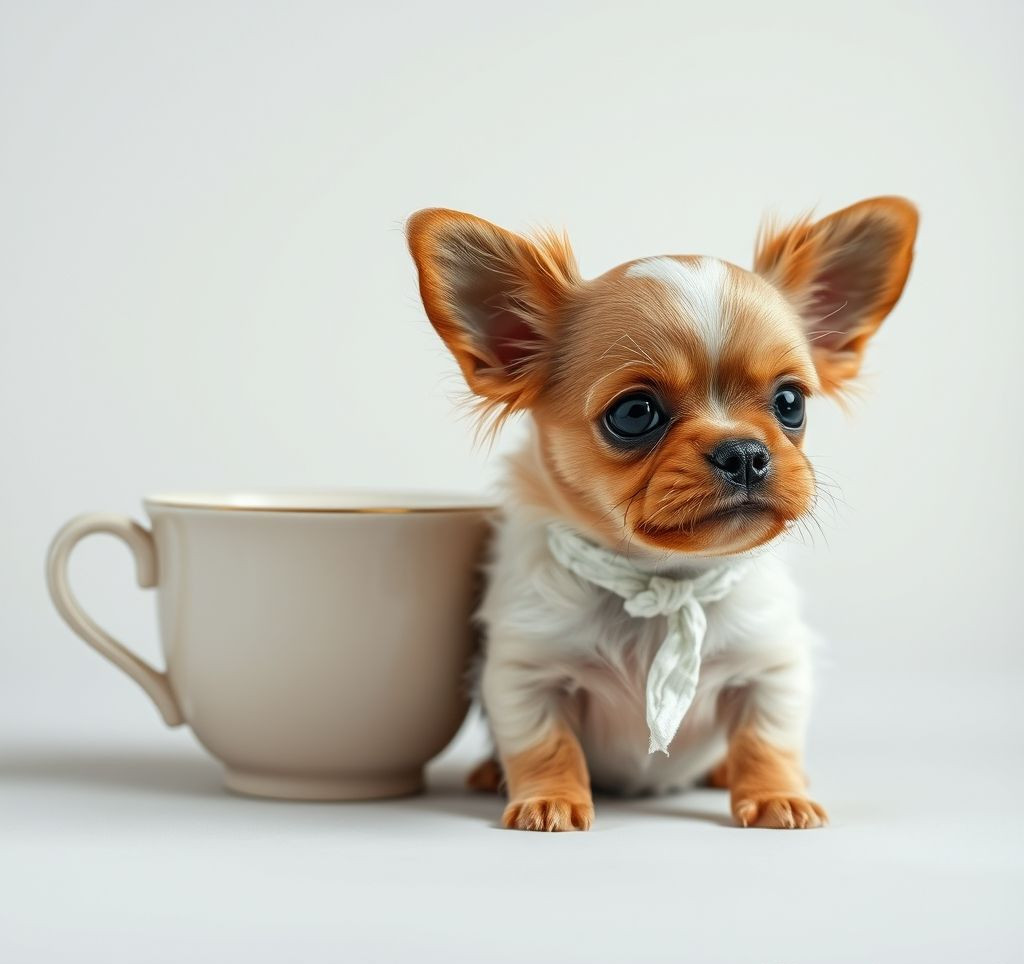Navigating the World of Teacup Dogs Adoption: Understanding the Differences
The allure of a pint-sized canine companion is undeniable. When considering teacup dogs adoption, many are drawn to the incredibly small stature of these pets, imagining a perfectly portable pal. However, the reality behind the term “teacup” is often complex and, for some, can involve ethically questionable breeding practices. This guide aims to illuminate the distinctions between naturally small breeds and those bred to extreme, often unhealthy, sizes, and provides essential insights for a responsible adoption journey.
Why Responsible Small Dog Adoption Matters
Choosing to bring any dog into your home is a significant commitment, and understanding the specific needs and origins of small breeds is crucial. Responsible adoption prioritizes the well-being of the animal above all else. When it comes to tiny dogs, critical factors to consider include:
- Health Over Size: Naturally small breeds have developed over generations to be robust within their size parameters. Dogs intentionally bred to extreme smallness can suffer from a range of health issues.
- Ethical Breeding Practices: Reputable breeders focus on the health and temperament of their dogs, not just adhering to novelty size trends. Understanding the breeder’s history and practices is paramount.
- Lifelong Commitment: All dogs require care, training, and veterinary attention. Smaller dogs, especially those with potential health complications, may have specialized needs.
- Dispelling Myths: Not all tiny dogs are “teacups” in the problematic sense. Many purebred dogs are naturally small and make wonderful pets when sourced responsibly.
Understanding the Nuances of Tiny Breeds
The term “teacup” is not a recognized breed standard by major kennel clubs. It’s often a marketing term used to describe dogs of exceptionally small size, typically under 5 pounds. While some breeds are inherently small, such as the Chihuahua, Yorkshire Terrier, or Pomeranian, responsible breeders strive for health and breed standards, not extreme miniaturization. The concern arises when dogs are bred from the smallest of their litter, or when runts are intentionally bred, which can predispose them to:
- Hypoglycemia (low blood sugar)
- Heart conditions
- Luxating patellas (dislocating kneecaps)
- Respiratory problems
- Digestive issues
- Dental problems
A significant portion of dogs marketed as “teacup” may also include puppies that are simply young and will grow to a more standard, healthy size for their breed. According to the American Kennel Club (AKC), healthy adult Chihuahuas, for instance, typically weigh between 2 to 6 pounds, demonstrating that “tiny” can still be healthy within established breed parameters.

Your Guide to Responsible Teacup Dogs Adoption
When embarking on teacup dogs adoption or seeking a tiny dog, a proactive and informed approach is essential.
Focusing on adopting from reputable sources or rescue organizations can ensure you are not inadvertently supporting unethical breeding practices.- Prioritize Rescue Organizations: Many small dog breeds, and mixes that happen to be small, end up in shelters or breed-specific rescues. These organizations often have a thorough understanding of the dogs’ backgrounds and health. Look for rescues specializing in small breeds or specific breeds you are interested in, such as a teacup chihuahua adoption.
- Vet and Research Breeders: If considering a breeder, do extensive research. Ask for health clearances for both parents, inquire about the puppy’s parents’ size and health history, and never buy from a breeder who won’t let you see the parents or their living conditions. A reputable breeder will be transparent and knowledgeable.
- ObservePuppy Health: Look for a puppy that is alert, active, has clear eyes and a clean nose, and a healthy coat. A puppy that seems lethargic, has discharge from the eyes or nose, or appears underweight may have underlying health issues.
- Understand “Tiny” vs. “Teacup”: Remember that many naturally small breeds are perfectly healthy within their usual size range. Focus on finding a healthy, well-adjusted companion rather than a dog marketed solely for its extreme smallness.
- Ask Questions: Don’t hesitate to ask the rescue or breeder about the dog’s diet, exercise needs, and any known medical conditions. For example, in tiny dog adoption scenarios, understanding feeding schedules to prevent hypoglycemia is vital for very small breeds.
Expert Insights and Best Practices for Small Dog Adoption
Adopting a small dog, whether a specific breed or a delightful mixed breed, can be incredibly rewarding. Here are some tips to ensure a smooth transition and a happy life for your new companion:
- Consult Your Veterinarian Early: Upon adoption, a veterinary check-up is crucial to assess the dog’s overall health and establish a care plan. Discuss dietary recommendations and vaccination schedules.
- Dog-Proof Your Home: Small dogs can be more vulnerable to household hazards. Ensure electrical cords are secured, and small objects that could be choking hazards are out of reach.
- Gentle Handling: Due to their delicate frames, always handle very small dogs with care and avoid rough play, especially with children.
- Socialization is Key: Properly socialize your small dog from a young age with people, other animals, and new environments to build confidence and prevent behavioral issues.
- Be Wary of Unrealistic Promises: Avoid adopting from sources that guarantee toy or “teacup” sizes, or that seem more interested in selling quickly than ensuring a good match.
As Dr. Sophia Yin, a renowned veterinarian and animal behaviorist, noted, “The most important thing is to understand the animal’s needs and needs of the family and make sure they match.” This ethos is particularly pertinent when adopting tiny breeds, ensuring that the focus remains on the dog’s health and happiness throughout its life, and prioritizing responsible adoption.
“`



